I am a beginner with flutter and dart. I have been trying to implement a navigationBar on three different pages in my app. The toggling works well for an individual page but I have problems persisting the active and inactive tabs state on all the pages. It seems like when it navigates to another page, I lose the active state too the tabs. This is my code.
AppFooter.dart
import 'package:flutter/material.dart';
class AppFooter extends StatefulWidget {
@override
_AppFooterState createState() => _AppFooterState();
}
class _AppFooterState extends State<AppFooter> {
int index = 0;
@override
Widget build(BuildContext context) {
return new Theme(
data: Theme.of(context).copyWith(
// sets the background color of the `BottomNavigationBar`
canvasColor: Colors.white,
// sets the active color of the `BottomNavigationBar` if `Brightness` is light
primaryColor: Colors.green,
textTheme: Theme.of(context)
.textTheme
.copyWith(caption: new TextStyle(color: Colors.grey))),
child: new BottomNavigationBar(
type: BottomNavigationBarType.fixed,
currentIndex: index,
onTap: (int index) {
setState(() {
this.index = index;
});
switch (index){
case 0: Navigator.of(context).pushNamed('/dashboard');
break;
case 1: Navigator.of(context).pushNamed('/medical centre');
break;
case 2: Navigator.of(context).pushNamed('/history');
break;
}
},
items: [
new BottomNavigationBarItem(
backgroundColor: Colors.white,
icon: index==0?new Image.asset('assets/images/dashboard_active.png'):new Image.asset('assets/images/dashboard_inactive.png'),
title: new Text('Dashboard', style: new TextStyle(fontSize: 12.0))),
new BottomNavigationBarItem(
backgroundColor: Colors.white,
icon: index==1?new Image.asset('assets/images/medical_sevice_active.png'):new Image.asset('assets/images/medical_sevice_inactive.png'),
title: new Text('Health Services', style: new TextStyle(fontSize: 12.0))),
new BottomNavigationBarItem(
icon: InkWell(
child: Icon(
Icons.format_align_left,
// color: green,
size: 20.0,
),
),
title: new Text('History', style: new TextStyle(fontSize: 12.0))),
]),
);
}
}
